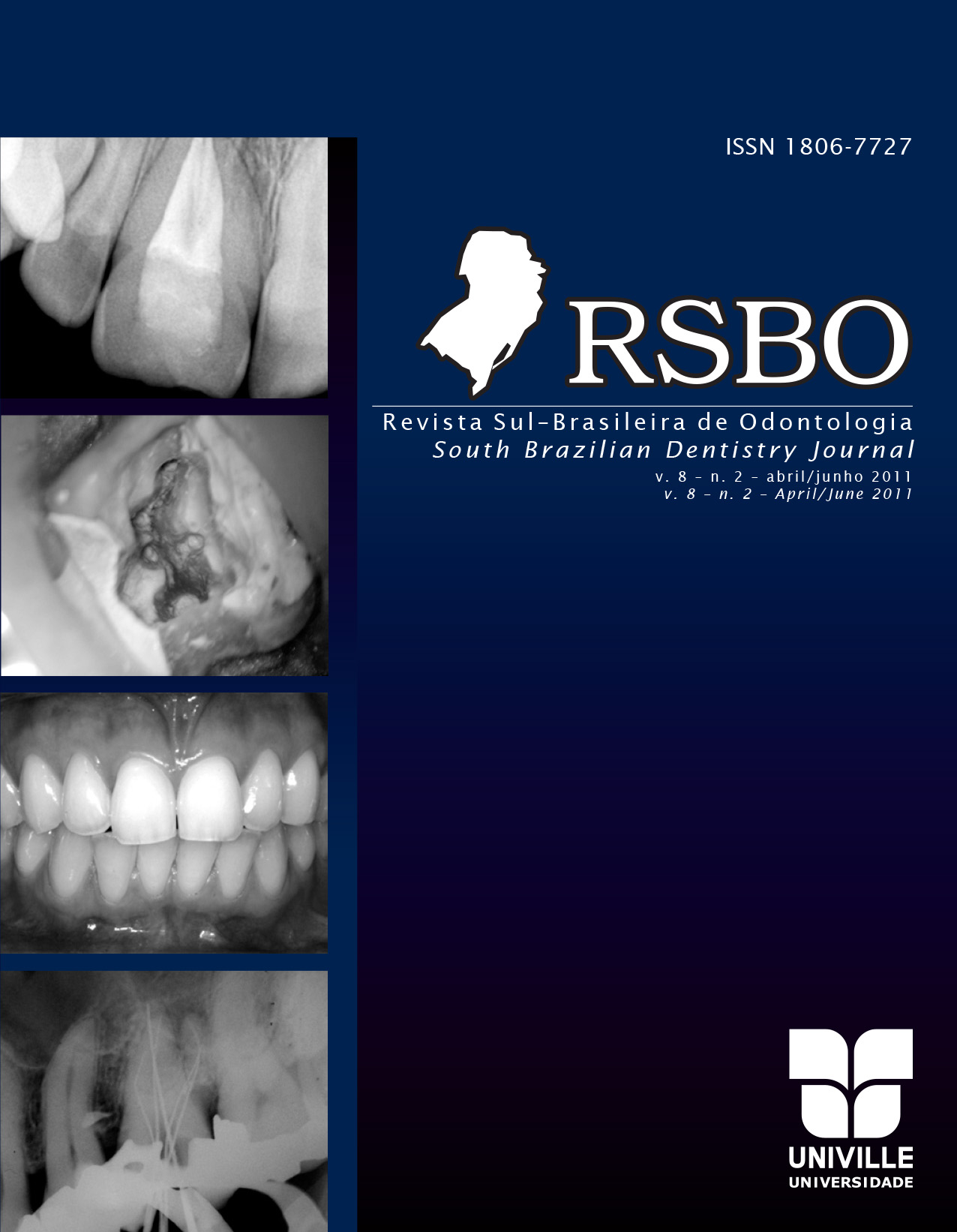Nuclear anomalies in the buccal cells of children under dental treatment
DOI:
https://doi.org/10.21726/rsbo.v8i2.1056Palavras-chave:
genotoxicity; micronucleus tests; dental materials.Resumo
Introduction: Since some dental materials may be aggressive
to a person’s body, studies involving such materials seem to
be necessary. Objective: This study was conducted to evaluate
the genotoxicity of dental materials through micronucleus (MN)
test. Material and methods: Exfoliated buccal cells of 4-to-12
year-old children, who were on some type of dental treatment,
were collected either before or after the treatment ending. Each
sample was composed of 1,000 cells per patient. Student’s t
test was used for comparison. Results: The dental materials
were divided into 3 groups, as follows: cement, monomers, and
their combination. Treatments using monomer + cement-based
materials were found to increase significantly the number
of binucleated (BN) cells, (p < 0.05) which indicate several
degenerative nuclear changes. Conclusion: The combination
of cement-based dental material with monomers increases the
cytotoxic action of dental materials.

